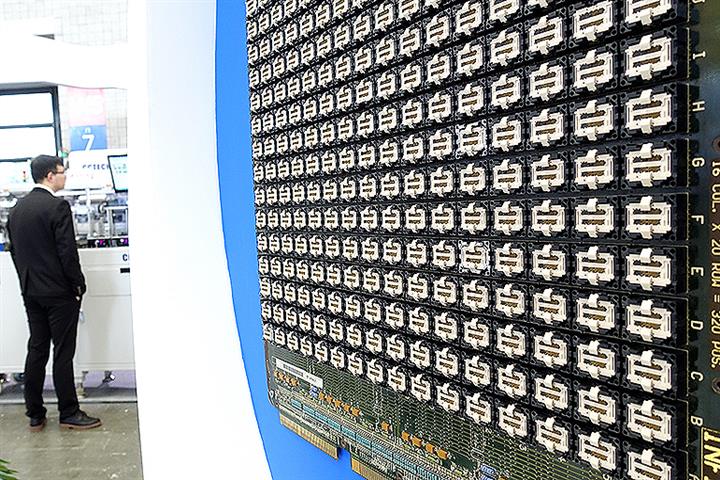 The Consequences and Risks of America’s Semiconductor Upheaval Against China
The Consequences and Risks of America’s Semiconductor Upheaval Against China(Yicai Global) May 20 -- In 2019, the Trump administration unleashed its “technology war” against China, with the goal of attempting to block China’s development in high tech sectors by depriving targeted companies from procuring components manufactured in the United States. As the White House ramped up its hostility towards Beijing, it intensified its measures. The most notable target of these efforts was the Chinese telecommunications firm Huawei, which was first placed on the commerce department “entity list” putting it under export controls, and then later subject to the “foreign direct product rule” which unilaterally banned overseas companies who use US patents in their own semiconductor production from supplying the company.
Even though the Biden administration has since taken office, he has not reversed these decisions and has instead pressed on in the mould of an “America First” policy pertaining to semiconductors with the goal of aiming to consolidate a US monopoly of this industry, with an eye against China, in order to control “the technologies” of the future. What has been the consequences of these decisions? And how is Huawei and China as a whole responding to them? Whilst the company was forced to shed some of its smartphone products as a result, this hasn’t been a win-win for the US. In fact, these decisions have had adverse consequences for America and the world at large.
To summarize: The aggressive politicisation of the semiconductor sector against the world’s second largest economy is cutting up and subsequently disrupting a global spanning supply chain, reversing globalization and creating a “localization” effect. Firstly, China has massively boosted funding and investment into semiconductor capabilities on a whole of society scale. America’s decisions have created political risk for technology firms who rely on its supplies. On an organizational level, firms have been bulk buying semiconductor making and lithography equipment from the Netherlands, Japan and South Korea, as well as also panic buying semiconductors as a whole in order to brace for future potential restrictions. Companies are losing confidence in traditional suppliers.
This uncertainty has had the run-on effect of creating a global shortage in semiconductors as a whole, which is causing risks to the global economy. The semiconductor shortage has created delays in the manufacturing and supply of electronic consumer goods and automobiles, which has forced many factories around the world to postpone production and furlough workers. For example, Nissan’s European Factory in Sunderland UK was forced to slow down production for three weeks due to semiconductor shortages. This has also had the run-on consequence of growing inflation too, which undoubtedly contributed to the unexpected surge in the US consumer price index, which jittered global markets last week.
These adverse outcomes illustrate the weaponization of technology supply chains against China will not make America better off, a localized supply chain is more expensive and will as Beijing presses ahead with developing its own industry, cost them considerable market share. This year China will commence production of 7nm nodes and will quickly cede dependency on lower nodes, with SMIC (Semiconductor Manufacturing International Corporation) investing in a USD2.35 billion chip foundry in Shenzhen set to produce 28-nanometer integrated circuits with a goal of achieving a monthly output of around 40,000 12-inch wafer chips. This has allowed companies such as Huawei to continue to advance its 5G networks despite US sanctions.
Although China still lacks the capabilities to immediately reach the leading 3nm node, which is produced by Taiwan Semiconductor Manufacturing Company (TSMC), government investment into advancing the sector has already amounted to USD150 billion and earmarked investment for the 14th 5-year plan extends up to USD1 trillion. Whilst this is seen as a political necessity, nonetheless few disagree with the premise that an open-ended global industry remains preferential. Leading semiconductor companies in Korea, Taiwan, America and Japan still seek to compete within the Chinese semiconductor market due to a growing economy and surging demand, showing how perilous it is to upheave this market.
In this case, one may conclude by noting that there is one certain outcome from US policies right now: that is weaponizing semiconductors creates a “lose-lose” outcome, carving up a global industry into localized spheres, creating a fractured market, increasing prices and yet nonetheless failing to block China’s technological advances anyway. For all involved it is a costly and unpredictable path with knock on effects all the way down to the ordinary consumer.